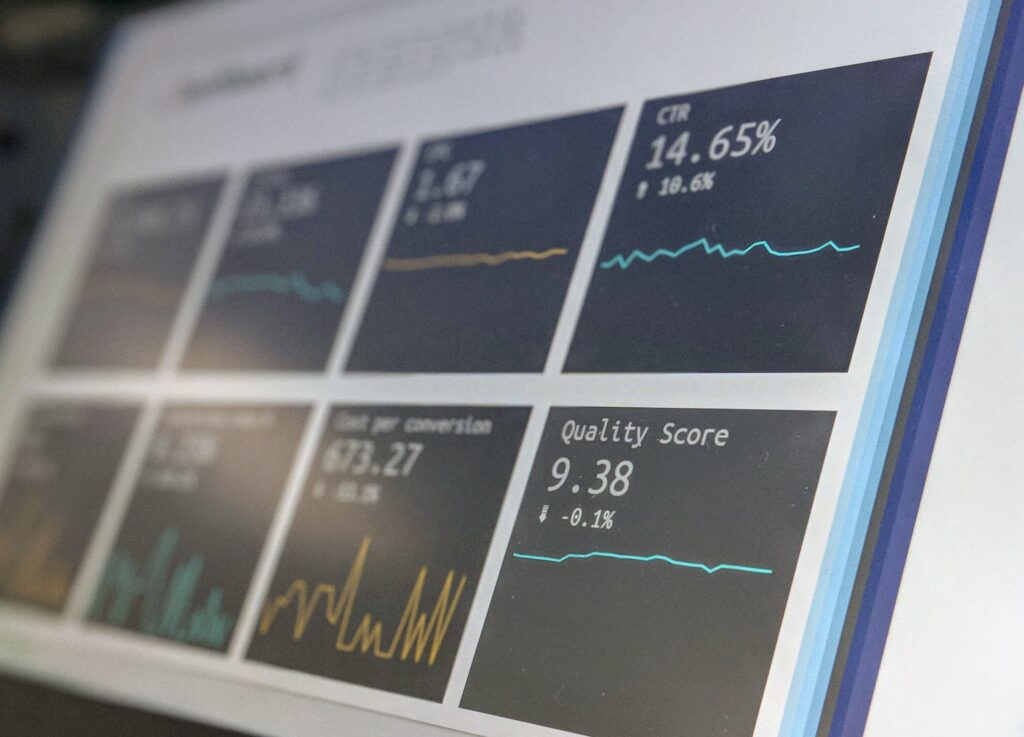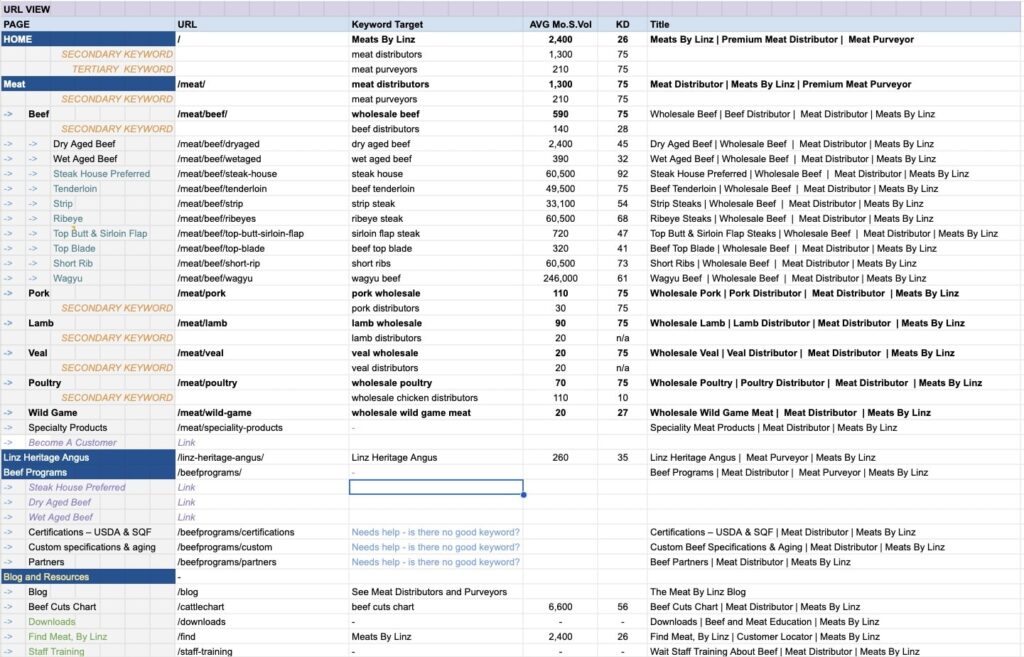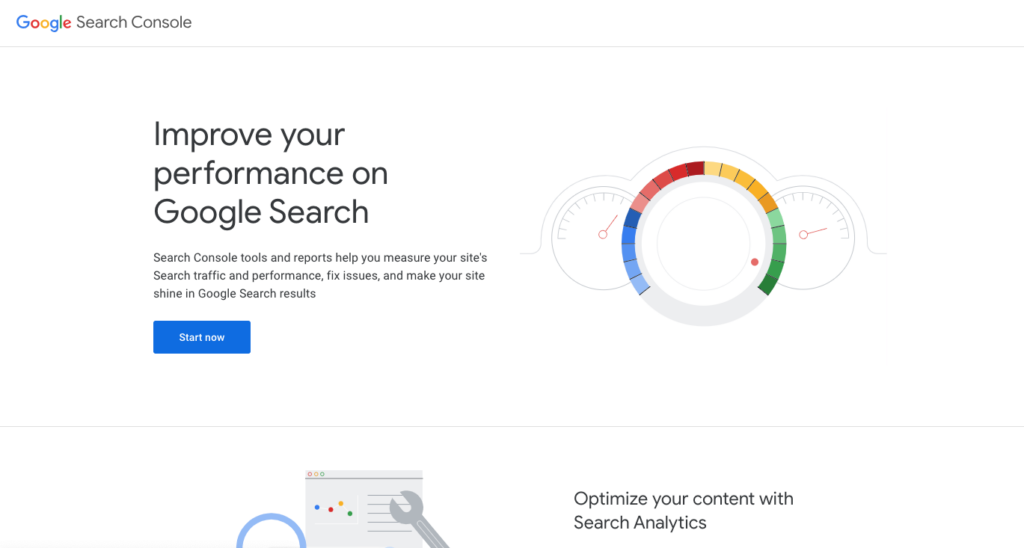How to Revitalize an Aging Website with a Fresh SEO Approach
Unearth the untapped potential of your aging website. Dive into a comprehensive guide to revitalize its digital presence, enhance SEO, and reclaim its traffic.

Recognizing the Need for an Update
The journey of an aging website often feels like driving a car that’s long overdue for a tune-up. While a car’s warning lights can flash and tell you something amiss, a website doesn’t have a “check engine” light for SEO. It’s easy to get distracted by the day-to-day grind, sidelining your website and SEO. But dwindling website traffic is often the first wake-up call; it’s a clear signal that your digital presence needs an update.

Rediscovering Your Website’s Potential
Revamping an old website might sound overwhelming, but it doesn’t have to be. Think of this guide as your roadmap, not just to navigate the challenges, but to restart your website’s engine. SEO can never promise overnight success or quick fixes, but armed with determination and effective strategies, you’ll get your website back on the road.
The Core Ingredients for Boosting Website Performance
- Regularly Update Content: Keeping your content fresh signals relevance. Updating your primary page content a few times a year with new information will always help. Creating a blog and turning your website into an information resource is also a key factor in growing traffic.
- Expand Keyword-Targeted Pages: Diversify your keyword portfolio to cover a broader spectrum. There’s almost always more of an audience for your website to cater to. Keyword research is the way to find the topics.
- Optimize Site Usability and Speed: User experience plays a significant role in SEO. If your website feels sluggish to you, it feels sluggish to your users. If you can’t find the right information, your users can’t find it either.
- Build Quality Links: New links, especially from authority sites, enhance credibility and often boost rankings for the long term.
The Best Starting Point is Developing A Content Strategy.
Content is the linchpin of SEO. Modern SEO transcends mere keyword optimization; it’s about resonating with your audience’s intent. Use tools like Google Analytics to identify low-performing content and keyword research tools to steer your content strategy based on audience needs.
But First, you need to set your keyword targets.
It all begins with a robust keyword strategy. Whether you’re rediscovering old keyword lists or starting new ones, a well-defined keyword list acts as your north star. Begin by aligning keywords with your core pages, and let the new keyword discoveries inspire your blog topics.
Step 1: Harvesting Keywords
Gathering a list of starting keywords is easier than most people think. You are a user of search engines, and every time you use a search engine you are contributing to keyword data. Think about the process from your client’s perspective. Here are some ideas to get the ball rolling.
- Outline all your services or products. What’s missing on your current website?
- Brainstorm synonyms or related terms. What topics are your customers always interested in?
- Group these keywords under broader categories. For instance, services ranging from “brand identity development” to “media buying” can fall under the umbrella term “Full Service Marketing Agency”. Giving your keyword an overarching structure allows you to build campaigns around each topic.
- And don’t forget – AI tools like ChatGPT can offer invaluable assistance, in expanding and refining your keyword list. Just ask it for more ideas and it will deliver. Keep in mind AI can hallucinate a bit, so don’t take everything it says as gospel.
Step 2: Get the Data
Having a list of potential keywords feels like a huge win, but without some data behind each word, you might be going after words that simply fall flat. For example, I used to work with a food photographer and he wanted portfolios for “Savory” or “Sweet” and the simple fact was almost zero people used those words when looking for a photographer to hire. A little data to prove that saved us both a lot of time. Instead, we could focus on the keywords that have real value.
Start by taking your list and format into a spreadsheet. Then, plug each word into one of the following tools to get data. Then enter it back into your spreadsheet for sorting and organization.
- Google Keyword Planner:
- Overview: A staple in the world of SEO, Google Keyword Planner is an official tool from Google designed to help users identify keyword trends, search volumes, and competitive metrics.
- How to Use: Input keywords or phrases relevant to your niche, and the planner will generate a list of related keywords along with data such as monthly search volume and competition level.
- Cost: This tool is entirely free, though it’s integrated within Google Ads, and will often nudge users towards creating paid campaigns, but you don’t have to.
- Answer The Public:
- Overview: Answer The Public visualizes search queries and questions people are asking around specific keywords, along with search volume. It’s particularly valuable for content creators to understand user intent and craft content accordingly around larger topics.
- How to Use: Enter a keyword, and the tool will display a range of questions, prepositions, and related searches. This can be used to formulate blog topics or to understand better what users are curious about within a given niche.
- Cost: While there is a free version, a more detailed Pro version is available, starting at $9 a month.
- SemRush:
- Overview: SemRush is a comprehensive digital marketing suite offering tools for keyword research, site audits, competitor analysis, and more. It’s a favorite among SEO professionals for its depth and versatility.
- How to Use: There are a ton of tools with SEM Rush, but dive into the keyword magic tool for expansive keyword lists and tailor your SEO strategy.
- Cost: While a limited free version exists, the Pro version starts at $129.95 per month, offering a broader spectrum of tools and insights.
With your data synced to each keyword, you can probably easily see the winners and losers, and hopefully, you grabbed a bunch of interesting new keywords along the way.
Easy Keyword Metrics to Consider
Volume: Represents the number of searches on average in a month. While high-volume keywords are enticing, niche-specific keywords, even with moderate volume, can be invaluable.
Competition – Keyword Difficulty: Some keyword tools like SEM Rush offer Keyword Difficulty scores – 100 being impossible and 0 being instant winners. It considers a variety of factors about the competition for a given word to create a score. This will help weed out keywords that might be massive time sinks when a lower volume but lower competition keyword is ripe for the picking.
CPC (Cost per click): An indicator of both competition and keyword value. If you see a keyword with a comparatively low search volume, but high CPC value, that is a strong indicator of the intent to buy. It’s probably worth targeting that word even if the volume looks low.
Step 3: To Keep It Organized – Make a Site Map

Recommended table heading row:
| PAGE | URL | Keyword Target | Avg Monthly Search Volume | KD | CPC | Page Title |
|---|---|---|---|---|---|---|
| Example Page | https://example.com | Example Keyword | 1000 | 50 | $1.50 | Example Page Title |
This is your architectural blueprint. It should detail all site pages alongside their URL, targeted keyword, volume, CPC, and current page title. See if each keyword has a designated page or content piece on your site. Hopefully, it’s clear to you where you have gaps in your content now, and what new pages you want to build.
Toward the bottom or a separate tab create a section for blog topics you discovered.
Now You Can Start Writing With a Plan.
Do all the pages on your website have at least 500 words? Have you dedicated a unique page for every primary keyword? Let your keyword research guide the course by crafting fresh and captivating content on every subject.
While penning down thoughts might not be everyone’s cup of tea, consider entrusting this task to a skilled copywriter, such as our amazing Kelly Papp, or seeking services online. This way, you can comfortably don the hat of the editor-in-chief, steering clear of the daunting emptiness of a blank page.
Furthermore, plunge into the world of blogging. It’s the perfect avenue to explore topics that might not seamlessly fit into your sitemap but undeniably amplify your business’s value or address customer queries. Individual blog posts might not always be traffic magnets, but collectively, over time, they can morph into the primary gateway, positioning your website as a reservoir of assistance and knowledge.
Perform an SEO Audit: Your Digital Check-Up

Much like a car requires regular diagnostic tests to function optimally, your website needs periodic SEO audits to ensure it’s performing at its best in search engines. Let’s delve into the tools at your disposal and how to leverage them:
1. Free Resources:
- Google Analytics:
- This tool provides an in-depth analysis of your website’s traffic, offering insights into user demographics, behavior, and conversion patterns.
- Action Steps:
- Monitor your website’s overall traffic trends. A sudden drop could indicate a penalty or technical issues.
- Pay attention to bounce rates. High bounce rates on specific pages can signal poor content or user experience.
- Analyze the sources of your traffic (organic, referral, direct, etc.) to understand where your audience is coming from.
- Google Search Console:
- GSC helps you monitor and maintain your site’s presence in Google Search results. It alerts you to errors, indexing status, and more.
- Action Steps:
- Check for any crawl errors or indexing issues that might hinder your site’s visibility.
- Review the ‘Performance’ tab to see which queries are driving traffic to your site.
- Ensure all your pages are submitted and indexed. If not, it’s time to check your sitemap and robots.txt.
- Page Speed Insights:
- Site speed is a crucial factor for SEO and user experience. PSI analyzes the content of a web page and then generates suggestions to make that page faster.
- Action Steps:
- Input your website’s URL and get a speed score.
- Warning – Not everything in the report is worth your time. Simply do your best to do what you can with your current site. Very old sites will struggle to accommodate all the recommendations, to help yourself feel better, throw in some of your top competitors’ websites. You just need to be beating them in the horse race.
- Prioritize fixing any highlighted issues, especially those labeled as “red” or “critical.”
- Implement the recommended optimizations for both mobile and desktop versions of your site.
2. Advanced Tools:
- SEMRush:
- Beyond keyword research, SEMRush provides a comprehensive SEO audit tool that identifies technical issues, backlink profiles, and more.
- Action Steps:
- Use the ‘Site Audit’ feature to uncover technical glitches, from broken links to issues with meta descriptions and titles.
- Explore the ‘Backlink Audit’ to review the quality of sites linking to you and pinpoint any toxic links that might harm your SEO.
- Monitor keyword rankings and get insights into your competitors’ strategies.
- Screaming Frog:
- This downloadable software crawls websites’ links, images, and applications from an SEO perspective.
- Action Steps:
- Run a crawl of your website. It will identify issues like broken links, oversized images, missing meta descriptions, and more.
- Regularly review and fix the highlighted issues to keep your website in optimal health.
Addressing Website Infrastructure Issues:
While these tools provide valuable insights, consider their recommendations as guidelines. Every website is unique. Hiring a dedicated web and SEO agency might be the only way to address everything. In addition, a dedicated agency can identify nuanced issues or strategies that automated tools might overlook. An expert can offer tailored advice, ensuring your website isn’t just functional, but thriving.
An outsider can help you evaluate the need for redesign. Sometimes, small tweaks can make a big difference. And they can help you review all technical improvements that are hard to implement such as using a (Content Distribution Network) CDN, next-gen image formats (webp), minifying files, and upgrading hosting.
Investing in SEO is for long-term success.
SEO demands continuous nurturing. As search algorithms morph, your strategies need to adapt in tandem. A consistent SEO regimen ensures your website’s adaptability and resilience in a perpetually evolving digital ecosystem.
Embrace SEO as a perennial strategy, a commitment that ensures your website remains vibrant and relevant. In the expansive universe of the internet, a well-optimized website is a luminous beacon. For tailored SEO guidance, WeCreate promises to rejuvenate your website, ensuring it’s not just visible but also unforgettable.
Most Recent Posts



